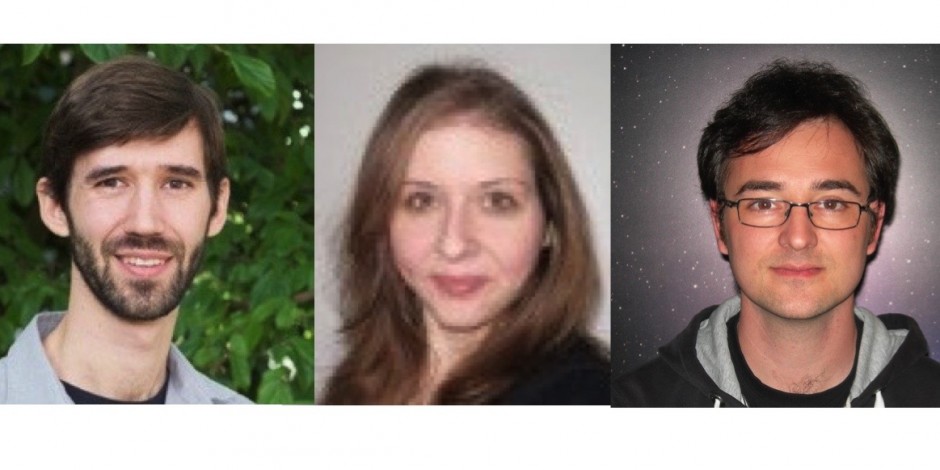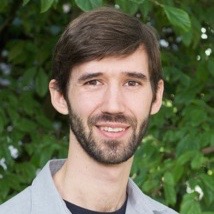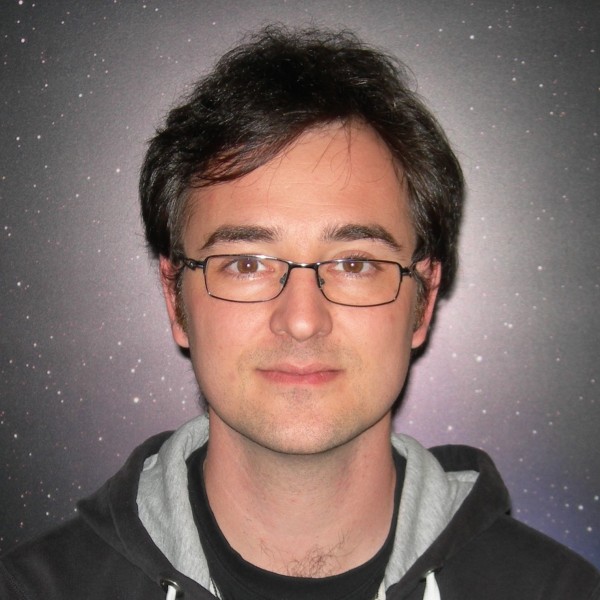“Life is great – why change anything?”

Judit Szulagyi likes hiking, Nicolas Blind is passionate about analog photography, and Sebastian Daemgen spends most of his free time with his six month-old son. What they all have in common: They are new members of PlanetS.

Sebastian Daemgen

Judit Szulagyi

Nicolas Blind
“My work uses direct imaging for the discovery and characterization of planetary and brown dwarf companions to nearby stars”, explains Sebastian Daemgen, PlanetS postdoc at the ETH Zurich since September 2015. He is now joined by Judit Szulagyi who officially started work at the ETH on 1 January 2016: “I am working on planet formation theory, mostly carrying out hydrodynamical simulations on planets and disks”, she says. Having also experience in observational infrared- and optical astronomy she ads: “As a postdoc at the NCCR PlanetS, I would like to combine these two skill-sets and collaborate more with observers.”
“I joined the NCCR PlanetS to work as engineer on the new project NIRPS, Near Infra Red Planet Searcher, the red arm of the very successful instrument HARPS,“ explains Nicolas Blind who has been working at the University of Geneva since October 2015. His past experience focused on optical instrumentation, “mostly for the stellar optical interferometry techniques,” he specifies: “This technique combines several individual telescopes interferometrically, hence synthesising a telescope with the visual acuity of a 100-m telescope and larger. This is more than twice the future E-ELT, or more than 40 times that of Hubble.”
Coming from France, Germany and Hungary
The new NCCR members are looking forward to meeting with everyone and getting involved in PlanetS. “I am actually highly enjoying multidisciplinary work,“ says Nicolas Blind: „In this respect, NIRPS is a great project that will ultimately deal with optics, photonics and real-time control systems. Apart from being a new field of work for me, radial-velocity spectroscopy in the infrared also comes with its bunch of new questions. This is an extremely exciting combination!” states the French research associate who defended his PhD in Grenoble in 2011 and then worked on the 2nd generation VLTI instrument, GRAVITY.
As Sebastian Daemgen says: “The NCCR PlanetS seems to be a great opportunity to broaden my perspective with respect to astronomical methods, topics, and collaborators.” Before moving to Zurich, he was McLean postdoctoral fellow at the University of Toronto in Canada. “However, it all started in my home town named Wülfrath, a small city not far from Cologne in Germany”, he says.
“I was born and raised in a ‘small’ town in Hungary, called Budapest”, tells Judit Szulagyi: “A few weeks ago one of my French scientific collaborators asked whether Budapest resembles to Mars, because the movie ‘The Martian’ was filmed over there. I gave him a nice postcard from Budapest, and explained that no, Budapest is not like Mars, it looks like Paris!”. In December, Judit Szulagyi enjoyed a long vacation doing what she likes most besides work: travelling and sightseeing. “I am in Hawaii watching hula dancers”, she wrote. She also likes to go outdoors into nature.
Nicolas Blind is passionate about mountain biking and analog photography. “I started to develop films myself two years ago, and I am about to start paper printing with the dusty enlargers in the basement of Geneva’s observatory,“ the engineer explains. Sebastian Daemgen dedicates most of his free time to his six month-old son. “When I am not playing, singing, or crawling on the living room floor I might find some time to play my favourite sport, volleyball”, he says. He is so happy that he thinks this year there is no need for a New Year’s resolution: “Life is great – why change anything?” Nicolas Blind has a bunch of projects for the coming years. “But I am not sure this can be called ‘resolution’”, he says: “I mostly try to move-on and learn from everything.” Judit Szulagyi admits that she is thinking of something special, but: “You are not supposed to share it in order to make it happen!”
Categories: Internal Newsletter
